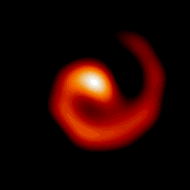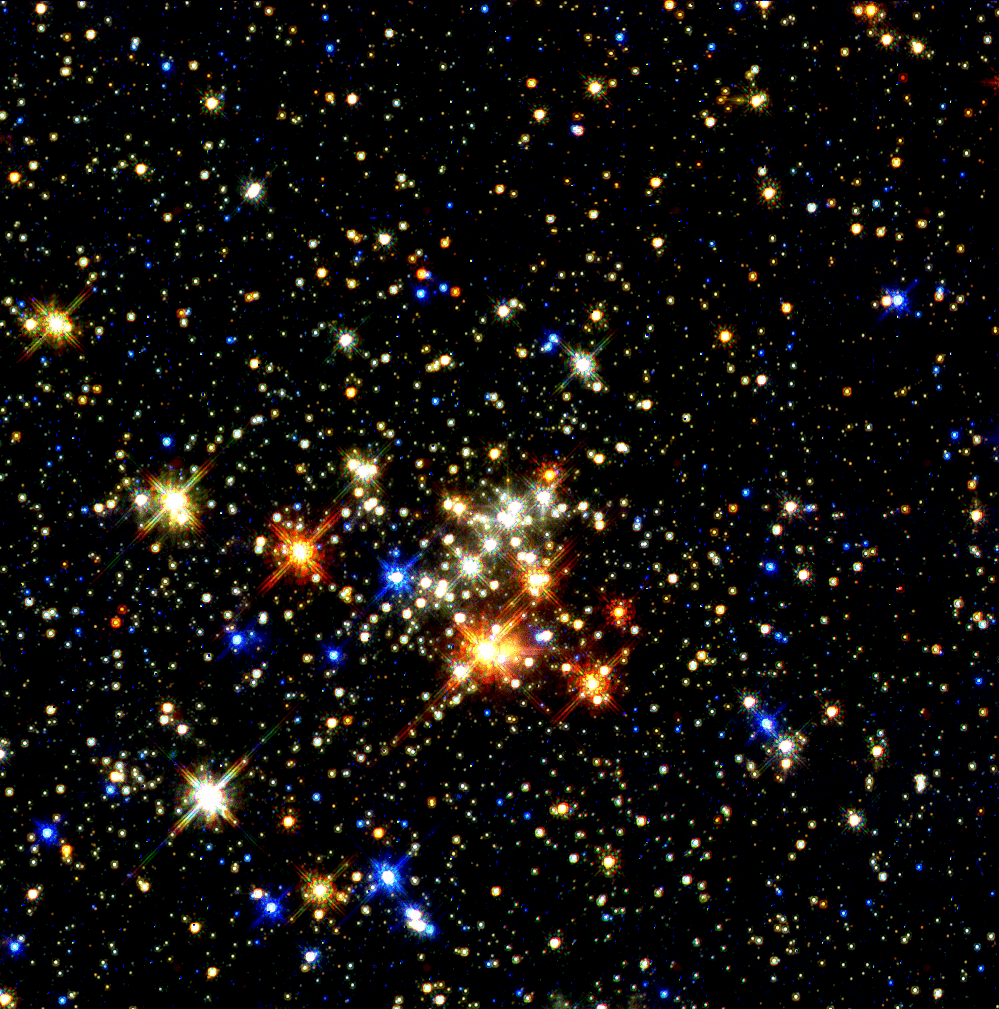WR 104

Crazy though it looks - this thing actually exists! It is the first `Pinwheel Nebula',
Wolf-Rayet 104, and it is whirling around once every 8 months right now in the
constellation of Sagittarius.
Intrigued? Take a look at the WR 104 Web page for
explanations and animations
|
WR 98A

Another Pinwheel whirlygig in the night sky! This is another beautiful
colliding-wind Wolf-Rayet binary system. Details on the
WR 98A Web page
|
Bright Lights, Big City!

Not one star in a billion is a Wolf-Rayet. So where do you go looking
for one? Here might be a nice start - the spectacular Quintuplet cluster
near the center of our own galaxy.
More news is just breaking now (click here)!
|